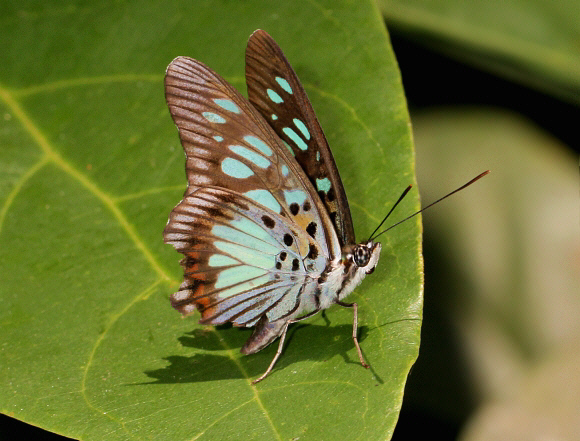
Introduction
There are 16 species in Pseudacraea – a wholly Afrotropical genus. The butterflies are popularly known as False Acraeas because many of the species are excellent mimics of the glassy-winged true Acraea species. Pseudacraea semire however, although having the black basal spots so typical of Acraeas, seems to bear a stronger resemblance to Graphium Swallowtails than to anything else.
Birds and reptilian predators see them in their full glorious colour though, and can certainly make out the details of their wing patterns. It is they that the mimicry is aimed at fooling, and despite significant differences in size, flight behaviour and habitat choice, many unrelated but similarly coloured impostors can pass themselves off as the same species of butterfly. A large number of palatable butterflies have evolved to do so because birds, having tasted an unpalatable butterfly, tend to reject any similarly coloured species. Thus the palatable butterflies survive to produce new generations, alongside their unpalatable and toxic cohorts.
Pseudacraea semire is distributed from Sierra Leone to Uganda, western Tanzania and Zambia.
Habitats
This is a forest species, and can be found in secondary woodland, coastal dry forest, and along riparian edges in woodland / savannah habitats.
Lifecycle
The larval foodplants include Ouratea, Ochna and Campylospermum ( Ochnaceae ).
Adult behaviour
Males are reminiscent of Charaxes in behaviour, with a fast powerful flight, in which they circle around trees and settle on the upper foliage to look out for passing females. They intercept almost any large fast butterfly that passes, and usually return to their original perching leaf. They have acute eyesight that can detect the slightest movement, so they are very alert and easily disturbed. If left in peace however they will fully outspread their wings to bask, displaying the gorgeous green-spotted upperside. Unfortunately when they do so they are so high up in the tree that obtaining a photo of the upperside is almost impossible.
